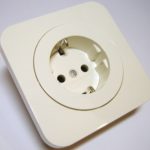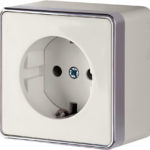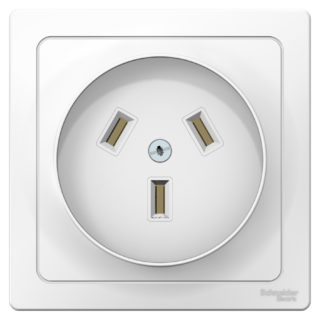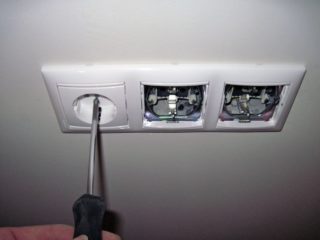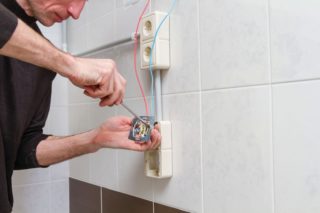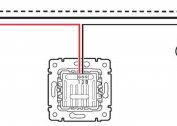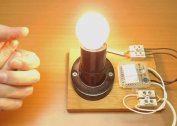Each house, office and public space has sockets. The most common variety is the receptacle. Its main task is to connect electrical appliances through a plug. The advantage of the device lies in the simplicity of installation, affordable cost and long service life.
Design and purpose of the socket
Sockets are installed in most rooms, without them it is not possible to turn on electrical appliances. The design of the device includes three main elements:
- contacts;
- block;
- protective case.
The last part performs two important functions - protective and decorative. The case can be either single or double. The main part of the device is the block. The cover and contacts are attached to this element. It is made, as a rule, of carbolite or ceramics.
Sockets made of carbolite are considered more durable. But a block of this material is found only in old-style devices. Ceramic products have one significant drawback: they are very fragile, so you need to install the device with great care, since a damaged part cannot be repaired.
Another working element of the outlet is the contact, which serves as a conductor of electricity. They are made of metal alloys, which are characterized by a certain degree of elasticity.
Outlet classification
The device is usually classified according to a number of different parameters. About each in more detail.
Design features
Depending on the type of construction, the device is divided into two types:
- Outdoor mounting. It is used in case of laying open wiring. The main part is placed in a housing made of plastic. The socket of an unheated type with open wiring is installed using a socket. Often this design is additionally equipped with a protective cover and backlight.
- Flush mounting or recessed type. A flat receptacle is used for concealed wiring. The main details - the block and the contacts connected to it are immersed in the wall. The case is a mounting box, due to which the protrusion behind the wall is practically not observed.
Which type is best to install depends on the preferences of the household.
According to the electrical circuit
According to this parameter, two types of device are also divided:
- Without grounding. Equipped with two contacts. Designed for bipolar wiring.
- Tripolar. Install in the presence of grounding, interconnected by a separate additional contact. Most often, this kind is mounted under electric stoves and air conditioners.
If there are difficulties in choosing sockets, you can seek advice from an employee of the management company or a consultant in a hardware store.
Moisture protection
By this criterion, devices are:
- Conventional or semi-hermetic. Designed for rooms where there is no chance of moisture. A few small drops are not a malfunction. Accurate marking is indicated on the plug.
- Waterproof or hermetic sockets. Designed for installation in rooms with a high level of humidity. The case becomes airtight thanks to a special membrane. Mounted externally.
Hermetic sockets are recommended to be preferred when installing them in a bathroom or toilet room, on the street of a private house.
By the number of pads
This parameter also divides the electrical device into two types:
- Double rooms are equipped with 4 connectors at once, which allows you to simultaneously connect two electrical devices.
- Single or single pole sockets are used to connect just one electrical appliance.
Having studied all the varieties and their features, you can begin to purchase and install devices.
Installation Features
Flush Mount Plugs
Step-by-step algorithm for connecting a hidden device in an apartment:
- Turn off the power to the room.
- Decide on the place where the socket will be located.
- With a hammer with a chisel, drill or electric drill, make a hole for the box, insert it there.
- Feed the conductors of the electrical cable through the holes located at the bottom of the installation box.
- Using building plaster, gypsum adhesive or plaster, fix the box to the wall. The adhesive material is adjusted to the consistency of soft plasticine.
- Leave on for about 10 minutes, until the material is completely dry, remove residues.
- The ends of the wires should be removed from the insulation and connected to them is the phase and neutral wires, if there is also a grounding wire.
- Fasten the wires with a screw or spring method.
The final manipulation is to install a protective plastic case.
Installing external plugs
Installing external plugs takes less time. It is used if the house has open wiring. The installation sequence is as follows:
- Turn off the power to the room.
- Schematically depict the dimensions of the installation on the wall.
- Disassemble the body of the external outlet - remove the front cover.
- Bolt the base to the wall.
- Connect the wires.
- Mount the plastic cover on top, fasten to the surface with bolts.
Sockets are made of non-combustible materials of high quality, which provide insulation of live parts and reliable contact.
The correct selection and installation of sockets will significantly extend the operational life of electrical appliances, so you need to approach this stage with all responsibility.

